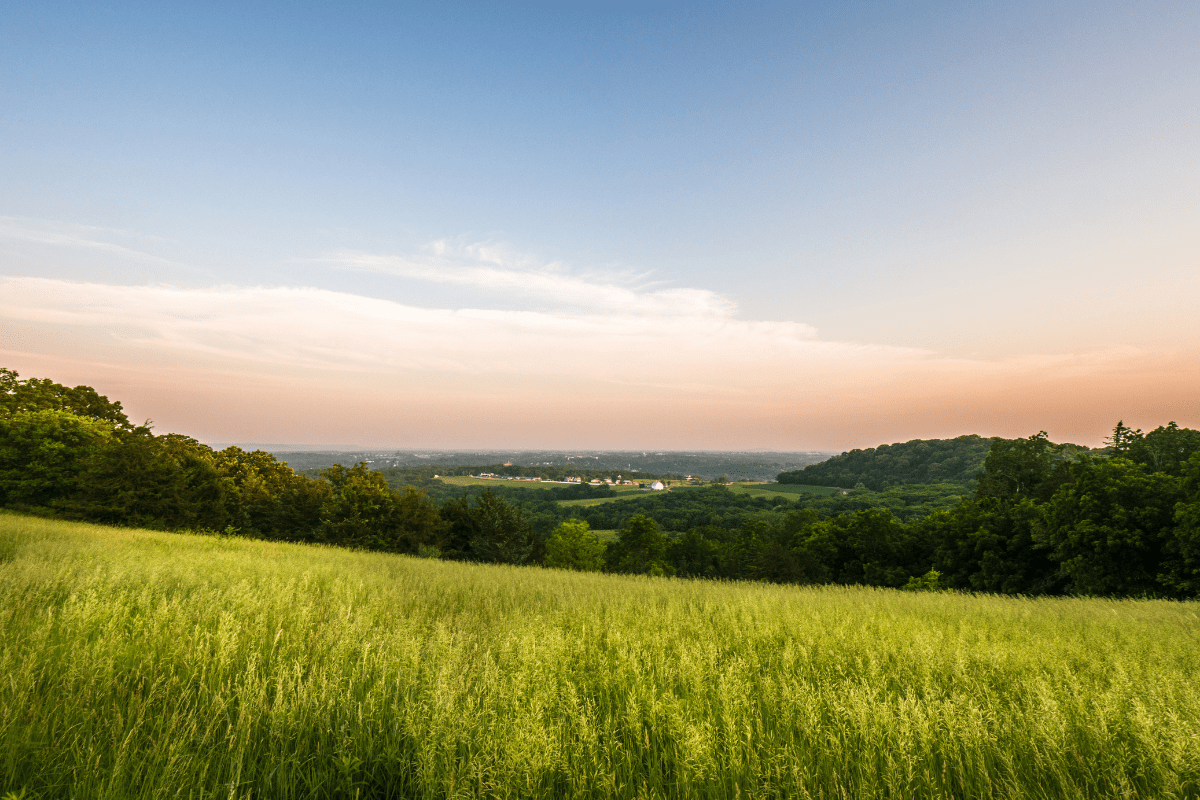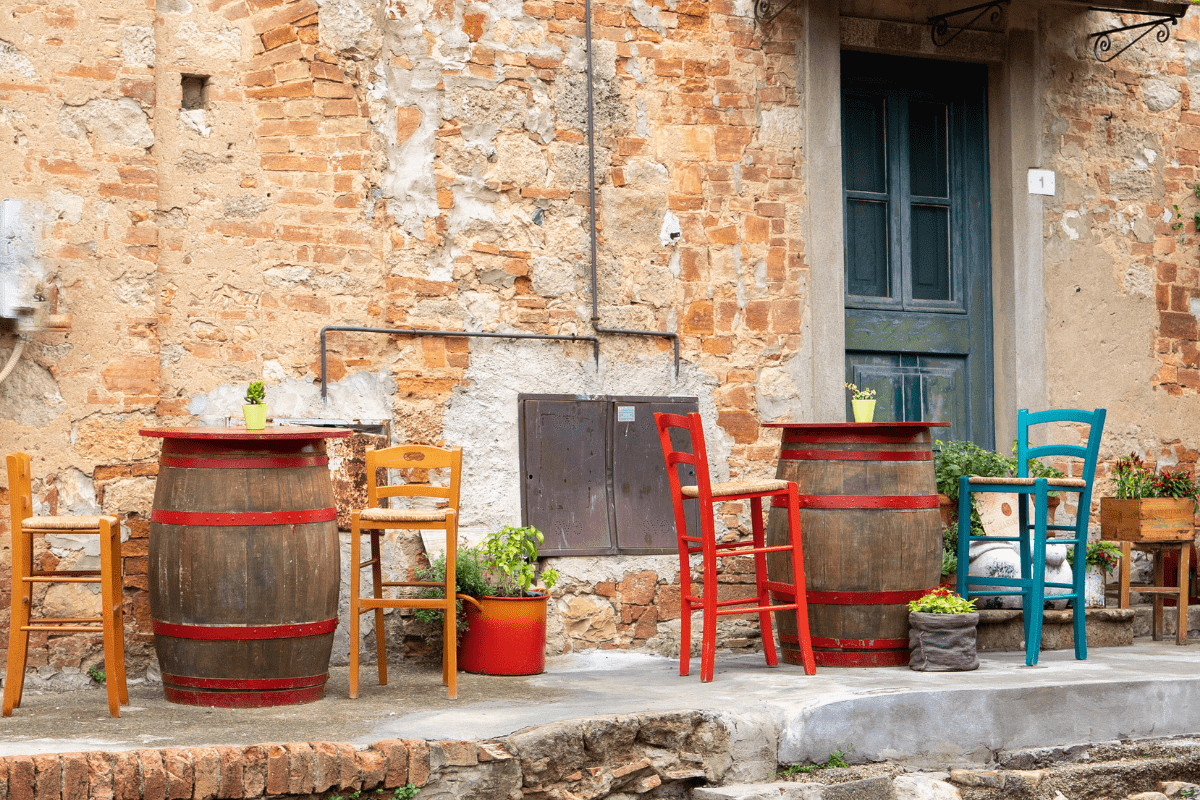Look, nobody plans a Midwest vacation dreaming about paddling through Illinois, and that's exactly why you should. While everyone else fights crowds at overcrowded "adventure destinations," you could be floating past 1,000-year-old cypress trees in a swamp that feels more Louisiana than Lincoln Land, or navigating Chicago's skyscrapers from river level like some kind of aquatic architect.
Northern waters that actually don't disappoint
The thing about Chain O'Lakes State Park is that it sounds made up when you tell people about it. You've got 6,500 acres of water connected through channels and passages that create 488 miles of shoreline, which is somehow more than the entire Illinois portion of Lake Michigan. That stat alone makes zero geographical sense until you realize these glacial lakes twist and wind through every possible cove and inlet like nature's own maze.
The system includes ten natural lakes (Grass, Marie, Nippersink, Bluff, Fox, Pistakee, Channel, Petite, Catherine, and Redhead) plus Turner Lake, where they actually allow electric motors if you're feeling lazy. The whole setup earned a 9/10 family-friendliness rating from local guides, probably because it's basically impossible to get into serious trouble here. The water stays relatively calm, the channels provide endless exploration without getting legitimately lost, and the 650+ plant species in the dunes area means there's always something blooming or bird-watching happening for those Instagram moments.
Fair warning though: you'll need to cough up $40+ annually for a Fox Waterway Agency user fee. Yeah, it's annoying, but consider it your ticket to what locals call the "Water Sports Capital" of Illinois, which admittedly isn't the world's most competitive title but still.
The urban paddle nobody expects
Chicago's river system pulls off something genuinely unique. Starting from the Skokie Lagoons' seven connected water bodies covering 242 acres, you can paddle 15 miles downstream straight into downtown Chicago's architectural canyon. The upper stretches flow through actual forest preserves where mink and great blue herons hang out, apparently unaware they're in Chicagoland.
The river averages just 2-4 feet deep with minimal current, making it perfect for beginners who want to pretend they're more adventurous than they actually are. Downtown gets trickier with boat traffic, but the "Wild Mile" section features floating gardens and ecological restoration projects that create this bizarre nature oasis surrounded by skyscrapers. It's like paddling through a city planner's fever dream, in the best way possible.
Kayak Chicago runs the rental game here, starting at $25 for two hours, or $65 for guided architecture tours where someone explains why that building looks like a corn cob. Urban Kayaks offers similar deals if you prefer your rental companies with slightly different names.
The Skokie Lagoons deserve their own shoutout as an "often-overlooked kayaking destination" according to local guides who probably wish tourists would stop overlooking them. Six interconnected lagoons with narrow, winding channels create what experts call "a sense of adventure in discovering your route," which is marketing speak for "you might get temporarily confused but it's fine." The real draw? Two resident bald eagles that locals have spotted regularly, plus deer families that somehow thrive minutes from urban sprawl.
Rivers that flow between 'meh' and 'magnificent'
The Fox River stretches 202 miles total with 118 miles cutting through Illinois, creating the state's most Jekyll-and-Hyde paddling experience. You've got 15 dams requiring portages (hope you've been doing your squats), but between these obstacles lie calm pools perfect for families and beginners who don't know what they've signed up for.
The absolute gem here is the Marge Cline Whitewater Course at Yorkville, a 1,100-foot bypass channel with Class I-II rapids and a 6-foot total drop. Yes, Illinois built artificial whitewater because nature didn't provide any, and honestly, good for them. The popular Batavia to Aurora stretch covers 3.5 miles of mild current with 19th-century architecture views and islands where river otters have returned after decades of "nope, too polluted" absence.
When rivers demand respect (and a shower after)
The Des Plaines River doesn't care about your weekend warrior status. This 133-mile river narrows to just 30 feet in sections while averaging 40-100 feet wide, with frequent deadfall obstacles that'll test your limbo skills. Check the USGS Gurnee station gauge before launching because anything under 10 cubic feet per second means you're basically carrying your kayak more than paddling it.
Smart paddlers choose either:
- Russell Road to Wadsworth Road section
- Oak Spring to Route 60 stretch
- Any section with adequate water flow
- Not paddling when it's too low
- Seriously, check the gauge first
The 7-mile Russell to Wadsworth route passes through pristine wetlands where deer, great blue herons, and diverse waterfowl remind you that suburban Chicago has some surprisingly wild corners.
Central Illinois: where Lincoln learned to hate boats
The Sangamon River carries serious historical weight as the waterway where Abraham Lincoln worked as a boatman, presumably developing his famous honesty after telling someone exactly what he thought about portaging. The 246-mile river system features the Lincoln Heritage Water Trail, covering 65-85 miles between Decatur and Petersburg with multiple access points.
Wheeland Park in Riverton offers boat ramps and camping ($10 non-electric, $20 for sites with power), while the river maintains a gentle 2-4 foot depth with minimal current. It's basically the kiddie pool of rivers, but in a good way. Wildlife enthusiasts regularly spot two juvenile eagles that locals have nicknamed, plus beavers and over 190 bird species. The water even maintains a Class A designation in sections, which means it's cleaner than you'd expect for a river flowing through farm country.
Clinton Lake pulls double duty as a 4,895-acre cooling reservoir for the nuclear power plant (yes, really) and a legitimate paddling destination with 130 miles of shoreline. The North Fork Canoe Trail stays restricted to paddlecraft and electric motors only, creating a protected environment away from the main lake's potential wind and waves.
With average depths of 15 feet and maximums reaching 60 feet, the lake supports impressive fish populations where anglers regularly land catfish and hybrid striped bass exceeding 10 pounds. Six public boat ramps plus one dedicated canoe launch with ADA-accessible docks ensure easy access, while the 1,000-foot white sand beach adds swimming options for families who remember to pack swimsuits.
Southern Illinois' swampy surprise
Here's where Illinois gets weird in the best way. The Cache River State Natural Area harbors the northernmost cypress-tupelo swamp in North America with trees exceeding 1,000 years old. This isn't just marketing fluff, it's an actual Wetland of International Importance designated by the Ramsar Convention, which sounds fancy because it is.
The Lower Cache River offers 3-6 miles of marked trail through tea-colored blackwater with minimal current. The state champion bald cypress has buttresses exceeding 40 feet in circumference, which is roughly the size of a small apartment. You'll paddle past prothonotary warblers, pileated woodpeckers, river otters, and occasionally spot cottonmouths because apparently, nobody told them this is Illinois, not Alabama.
Cache Bayou Outfitters, a nonprofit at 240 Dean Lane in Ullin, provides guided tours and rentals with no shuttle needed thanks to the minimal gradient. They're basically running swamp tours 1,000 miles north of where swamp tours should exist, and it works.
Rend Lake's surprisingly extensive trail system
Rend Lake sprawls across 18,900 acres with six designated kayak trail loops totaling over 20 miles of marked routes. Each section offers different experiences:
The Sandusky Cove Section covers 3.61 miles through three-quarters no-wake zones, taking about 2.25 hours if you're not racing. The Jackie Branch Section's 2.83 miles stays beginner-friendly while showcasing active beaver populations that apparently didn't get the memo about being nocturnal. The North Gun Creek Section extends 4.85 miles across open water, requiring intermediate skills when winds pick up and turn your kayak into a weathervane.
The Turnip Patch Exploration Area (whoever named these places had fun) provides premier waterfowl viewing, particularly during migration when the Mississippi Flyway funnels 40% of North American waterfowl through the region. It's basically bird rush hour, but with fewer honking complaints.
The rivers that make you work for it
The Middle Fork Vermilion River holds the distinction as Illinois' only National Wild and Scenic River, designated in 1989 when someone realized Illinois actually had something worth protecting. The 13-mile run from Kinney's Ford to Kickapoo State Park demands intermediate to advanced skills with Class II-III sections when water levels hit the sweet spot of 1.5-2.5 feet on the USGS Oakwood gauge.
Clear waters flow over sand and gravel bottoms supporting 57 fish species including the endangered bluebreast darter, which sounds made up but isn't. The surrounding ecosystem harbors 45 mammal species and over 190 bird species, while steep valley slopes reveal shale bluffs, sandstone formations, and springs. Spring and fall offer the best conditions, though water levels require obsessive monitoring since too low means dragging and too high means swimming.
For those seeking truly remote wilderness paddling, Lusk Creek in the Shawnee National Forest presents Illinois' most pristine waterway, if you're willing to earn it through suffering. Accessing the 7.1-mile route requires a 1.5-mile portage via forest trail #481, taking nearly two hours just to reach the put-in.
The effort rewards paddlers with:
- Crystal-clear spring-fed waters
- Sandstone canyons and waterfalls
- Complete solitude
- Questioning your life choices
- Amazing photos nobody will believe are from Illinois
- Serious bragging rights
Water levels fluctuate dramatically, with flows jumping from 150 to 1,600 cubic feet per second overnight. This candidate for National Wild and Scenic River designation remains so remote that most Illinois paddlers haven't attempted it, making it the ultimate hidden gem for masochistic kayakers.
The safety stuff you'll skip reading but shouldn't
Illinois requires one Coast Guard-approved PFD per person on all watercraft, with kids under 13 required to wear them constantly on vessels under 26 feet. Unpowered kayaks don't require registration (score!), though any kayak with a motor, even electric trolling motors, must be registered (government's gotta government).
The state's 0.08% blood alcohol limit applies to all watercraft operators, with first offenses carrying fines up to $2,500 and potential imprisonment. Night paddlers must carry flashlights showing white light visible for two miles, while all vessels need sound devices audible for half a mile, because apparently, yelling "HELP" doesn't count.
Water temperatures vary dramatically:
- Spring: 40-55°F (hypothermia says hello)
- Summer: 65-75°F (actually pleasant)
- Fall: 65°F dropping to 40°F (hypothermia's back)
- Winter: Just don't
The Illinois Department of Natural Resources maintains water quality monitoring, with fish consumption advisories affecting over 100 waterways due to mercury, PCBs, and PFAS contamination. Maybe don't drink the water either.
Getting on the water without buying a kayak
Major rental operations span Illinois, thankfully. Kayak Chicago offers multiple locations with hourly rentals from $25 and guided tours at $65 if you enjoy someone narrating your paddle. Heritage Harbor Marina near Starved Rock provides Hobie pedal kayaks ($35/2 hours for singles) and four-person Fiesta kayaks ($95/2 hours) for families who want to argue while paddling.
Most rentals include all required safety equipment plus basic instruction that you'll immediately forget once on the water. Many outfitters provide shuttle services for point-to-point river trips, particularly valuable on the Fox River where walking back would take forever. The industry supports Illinois' $47.2 billion tourism economy, which attracted 112.4 million visitors in 2023, though probably only twelve came specifically for kayaking.
Actually getting out there
Illinois transforms conventional Midwest paddling expectations through sheer variety and stubborn refusal to be boring. From Chicago's architectural canyon to ancient cypress groves, the state offers experiences that shouldn't exist this far from any ocean. Recent improvements like dam removals, new launch sites, and eliminating registration requirements for unpowered kayaks signal Illinois' commitment to expanding paddling access.
Whether you're seeking family-friendly reservoir paddling, engineered whitewater thrills, or wilderness exploration requiring forest portages, Illinois delivers experiences that explain why the recreation sector showed 9% annual growth. These waterways, from Lake Michigan's vastness to intimate prairie creeks, establish Illinois as an unexpected paddling paradise hiding in America's heartland. Just remember to check water levels, pack your PFD, and prepare to explain to friends why you went kayaking in Illinois on purpose.





